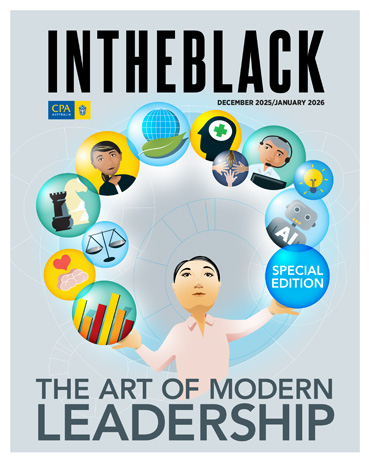Loading component...
At a glance
Sitharaman states during her budget speech at the national parliament in New Delhi that “we see the next five years as a unique opportunity to realise ‘Sabka Vikas’ [Hindi for ‘Together with all, development for all’] stimulating balanced growth across all regions.”
This budget, she adds, aims to initiate transformative reforms across six domains:
- Taxation
- Power sector
- Urban development
- Mining
- Financial sector
- Regulatory reforms
The fiscal deficit is projected at 4.8 per cent of GDP for financial year (FY) 2025, falling to 4.4 per cent for FY 2026.
Capital expenditure is forecast to be over INR 10 trillion (10.18 lakh crore) in 2024-2025.
Meanwhile, the Economic Survey 2025, tabled in Parliament the day before the budget announcement, forecasts India’s GDP range of between 6.3 per cent to 6.8 per cent for FY 2025-26.
Key takeaways from India’s Budget 2025
- Personal income tax cuts via an increase in income tax slabs (brackets) and an increase in the tax rebate for low-and-middle income earners.
- MSMEs and startups to receive enhanced financial support, including greater access to credit.
- India’s focus on attracting investment and making it easier to do business will continue.
- Large scale investments in infrastructure and the establishment of an AI centre of excellence for education.
Personal income tax cuts
India’s government continues a recent trend of cutting income taxes. For 2025-26, personal income tax cuts are proposed through a combination of increasing income tax slabs (brackets) and rebates.
Comparison of income tax slab (bracket) and rate for FY 2024-25 and FY 2025-26
| Income tax rate | Current annual income tax slab (bracket) for FY 2024-25 (INR) | Proposed annual income tax slab (bracket) for FY 2025-26 (INR) |
|---|---|---|
| Nil | Up to 300,000 | Up to 400,000 |
| 5% | 300,001 to 700,000 | 400,001 to 800,000 |
| 10% | 700,001 to 1,000,000 | 800,001 to 1,200,000 |
| 15% | 1,000,001 to 1,200,000 | 1,200,001 to 1,600,000 |
| 20% | 1,200,001 to 1,500,000 | 1,600,001 to 2,000,000 |
| 25% | 2,000,001 to 2,400,000 | |
| 30% | Above 1,500,000 | Above 2,400,000 |
Income tax rate Current annual income tax slab (bracket) for FY 2024-25 (INR) Proposed annual income tax slab (bracket) for FY 2025-26 (INR)
The government has also announced that it will increase tax rebates that effectively raises the tax-free threshold from INR700,000 (7 lakh) to INR 1,200,000 (12 lakh) for 2025-26.
For salaried taxpayers, there will be no tax payable up to INR 1,275,000 due to the standard deduction of INR 75,000.
The government has calculated that the cuts mean that someone on an annual income of INR 2,000,000 will pay INR 200,000 in income taxes in 2025-26, down from INR 290,000 in 2024-25. Someone earning INR 5,000,000 will save INR 110,000 in income tax.
The government estimates that because of these proposals, they will forgo about INR1 trillion (1 lakh crore or approximately A$1.9 billion) in direct taxes.
The finance minister also announced reductions or exemptions from Basic Customs Duty (BCD) on a wide range of goods such as critical minerals and lithium-ion batteries. As a result of these changes, about INR26 billion (2,600 crore) in indirect taxes will be forgone.
The government announced additional tax changes, including:
- Streamline the transfer pricing process by allowing for determining the arm’s length price of international transactions for a period of three years as an alternative to annual examination.
- To promote additional activities in the International Financial Services Centre (IFSC), special tax benefits are proposed for ship-leasing units, insurance offices and treasury centres of global companies established in the IFSC.
- To claim the benefits of IFSC, the cut-off date for commencement in the IFSC has been extended by five years to 31 March 2030
- Increase the registration period for small charitable trusts from five years to ten years.
- Extend the time limit to file updated returns from two years to four years.
- Introduce a simplified tax system for non-residents providing services to Indian electronics companies.
Support for micro, small and medium enterprises (MSMEs)
MSMEs continue to be recognised as a key engine of economic growth. Key budget announcements to help MSMEs include:
- To extend the period startups can access tax incentives for five years, meaning the benefit will be available to eligible start-ups incorporated before 1 April 2030.
- Increase the maximum credit guarantee for micro and small enterprises from INR50 million (5 crore) to INR100 million (10 crore). For startups, the maximum credit guarantee will be increased from INR100 million (10 crore) to INR 200 million (20 crore).
- Introduce customised credit cards with a INR500,000 (5 lakh) limit for micro enterprises registered on the Udyam portal. The government expects to issue 1 million cards in its first year.
- Establish a new Fund of Funds for startups, with an expanded scope from the existing Alternate Investment Fund (AIF), with a contribution of INR100 billion (10,000 crore).
- Launch a new scheme to provide term loans of up to INR 20 million (2 crore) for up to 500,000 first-time women, Scheduled Castes and Scheduled Tribes entrepreneurs over the next five years.
- BharatTradeNet, a new digital platform to streamline trade processes, is to be introduced.
Other announcements
- INR 5 billion (500 crore) allocated to establish an AI centre of excellence for the education sector.
- INR 1.5 trillion (1.5 lakh crore) in interest-free loans (spanning 50 years) to state governments for infrastructure development.
- A targeted increase in domestic production across 100 low-productivity agricultural districts, with support for key crops such as vegetables, fruit and makhana (fox nuts).
- A ‘High Level Committee for Regulatory Reform’ will be established to review non-financial sector regulations, certifications, licenses and permissions, with recommendations expected in a year.
- Establish a nuclear energy mission aimed at developing 100 gigawatts of nuclear power by 2047, including investment into research and development for small modular reactors.
- Provide broadband to all government secondary schools and primary health centres in rural areas.
- Establish a new Export Promotion Mission to facilitate easy access to export credit, cross-border factoring support, and support to MSMEs to tackle non-tariff measures in foreign markets.
- Increase the proportion of India’s rural population having access to potable water connections from the current 80 per cent to 100 per cent. The Jal Jeevan Mission will be extended until 2028 with increased funding.
- The foreign direct investment (FDI) limit for the insurance sector will be raised from 74 per cent to 100 per cent. The current requirements on foreign investments in the sector will be reviewed and simplified.
- The process and scope for fast-tracking company mergers will be widened and simplified.
- An investment friendliness index will be introduced to assess and rank Indian states based on investor-friendly policies.

